May 30, 2023
Creating A ‘Kingdom for Bicycles’ in Yichang, China
ITDP has been active across China since 2004, working to implement sustainable mobility projects that improve transport and urban life for all. The promotion of safe cycling and pedestrian infrastructure continues to be core to ITDP’s efforts to transform China’s cities.
This piece was authored by Bram van Ooijen, an urban transport consultant and contributor to ITDP China.
Over the past two decades, ITDP China has been working closely with major cities across the country to advance a vision for urban cycling that is inclusive and accessible. This includes projects to implement bicycle lanes, bicycle parking, and other facilities to provide more people with a quick, safe, affordable, and sustainable transport option — particularly in major cities.
Yichang is located in the heart of China and home to the Three Gorges Dam, the world’s largest hydroelectric facility of its kind. Yichang is also the third largest city in the Hubei province and home to over four million inhabitants. In recent years, the region has seen sustained population growth and is thus accelerating the development of sustainable transport networks, with a particular focus on improving cycling connectivity through the creation of comprehensive bicycle infrastructure, greenways, and complete streets.
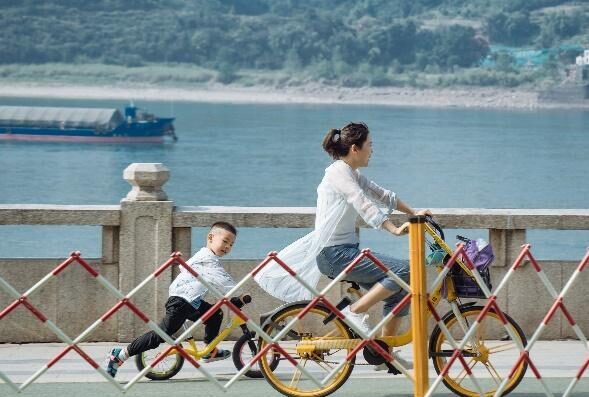
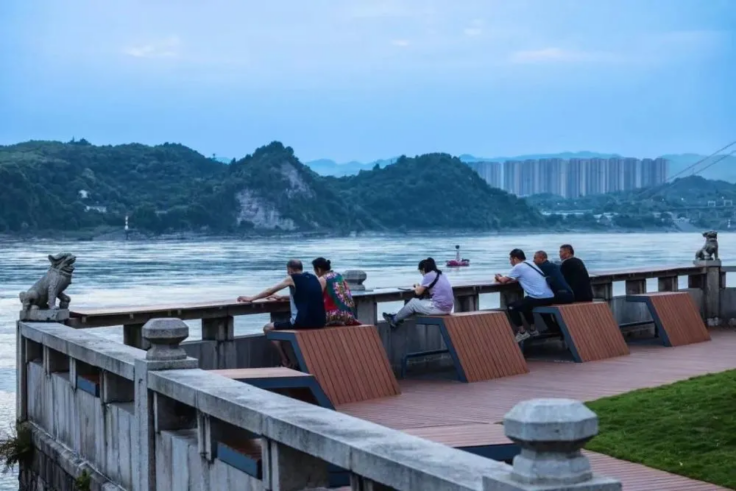
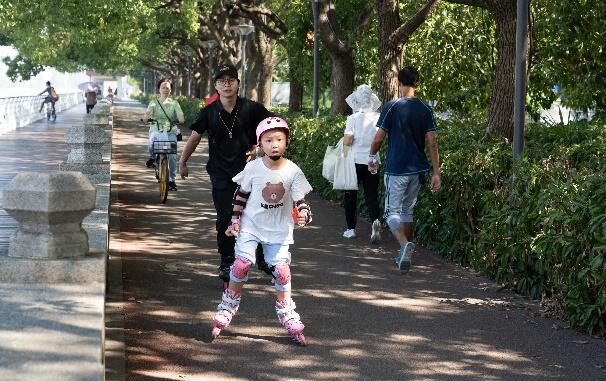

ITDP China has been working with the Yichang government since 2012, initially as part of a BRT project supported by the Asian Development Bank to connect a high-speed railway station with the city center. The city’s ‘Gold Standard’ BRT (ranked by the BRT Standard) opened in 2015 and now serves over 350,000 daily passengers. The system incorporates important cycling-friendly features, such as dedicated lanes, a bikeshare system, continuous sidewalks, and public space improvements along the corridor.
Since then, ITDP China has been involved in several regional projects to shift government policies and funding towards sustainable, accessible mobility for all. This includes the enhancement of both cycling and pedestrian infrastructure together through the implementation of a larger bike lane network alongside more greenways, parks, and public spaces. In 2019, a plan for a network of 570 kilometers of bicycle lanes was also unveiled. This network travels through urban areas and includes dedicated lanes on major arterials, connecting streets to diverse neighborhoods and commercial areas.
The most high-profile bicycle lane in the city opened in 2021 on Yunji Lu, a thoroughfare connecting Yichang’s main shopping area at Guomao with the Yangtze River-side’s Binjiang Park through a central commercial area. The ‘complete street’ improvement includes large enhancements to sidewalks, bicycle lanes, and intersections, as well as additional traffic calming measures and landscaping in public spaces to encourage active mobility.
Complete street improvements along Yunli Lu provides safer, more enjoyable cycling and walking access.
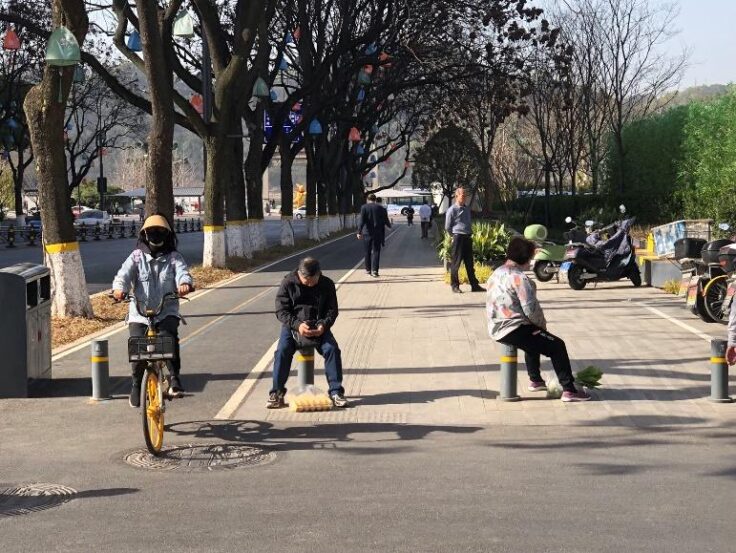

Additionally, a greenway network of 914 kilometers is in the works that connects Yichang’s urban corridors with the neighboring mountains, rivers, and villages, allowing more inclusion and access for the area’s populations. As of 2019, Yichang already has implemented a network of 192 kilometers of linear parks for pedestrians and cyclists, with new and improved greenways opening in the coming years.
The 10-kilometer long Binjiang Park, which debuted in 2022, connects the central parts of the city with the Yangtze River. Riverside industries, factories, and degenerated docks were removed to make way for new thriving public and communal spaces that hosts bicycle lanes, a skate park, a BMX pump track, children’s playgrounds, seating areas, public art installations, public toilets, and much more. The Binjiang Park is also part of a 25-kilometer greenway (which is planned with a future expansion of over 100 kilometers) along the Yangtze and allows for numerous connections with city roads and the Three Gorges Dam.
The new Binjiang Park along the Yangzte River attracted 200,000 pedestrians and cyclists in its first week.
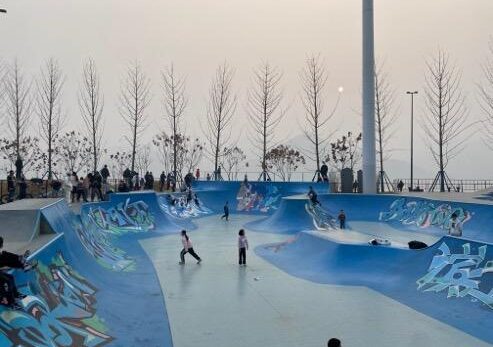
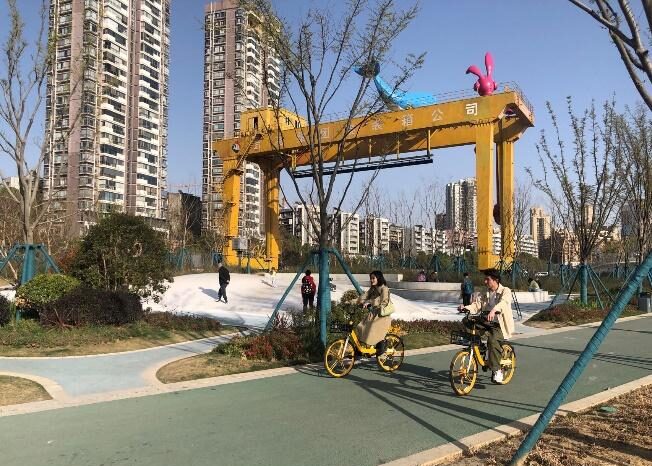
Another impressive new cycling connection is the implementation of a median bike lane located underneath the city’s Xiling Elevated Road. The lane is fully separated from mixed traffic, has public seating at various locations, and has dedicated bicycle traffic lights and easily identifiable bicycle lanes at intersections. Additional improvements were made to enhance walking and cycling access to the city’s BRT stations, following a study conducted by ITDP China. At some locations, shade structures were added at pedestrian islands to protect people from the summer heat and to ensure the comfort and safety of commuters.
Pocket parks and greenways across the city help to make cycling and walking easier and more enjoyable for residents.
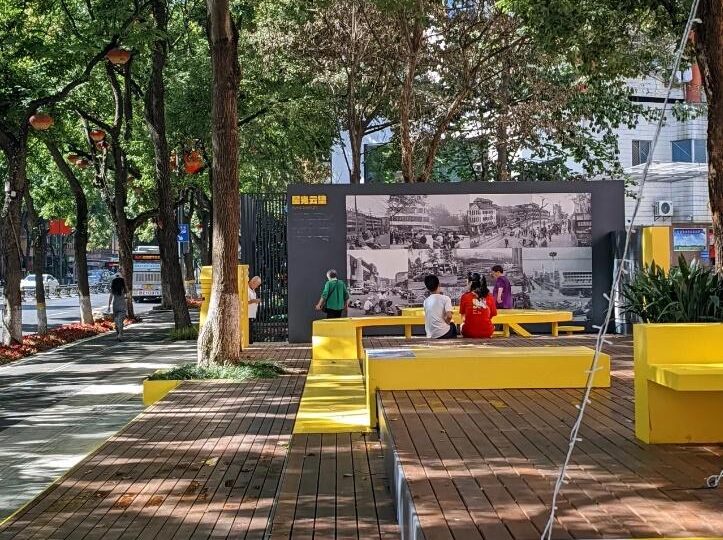
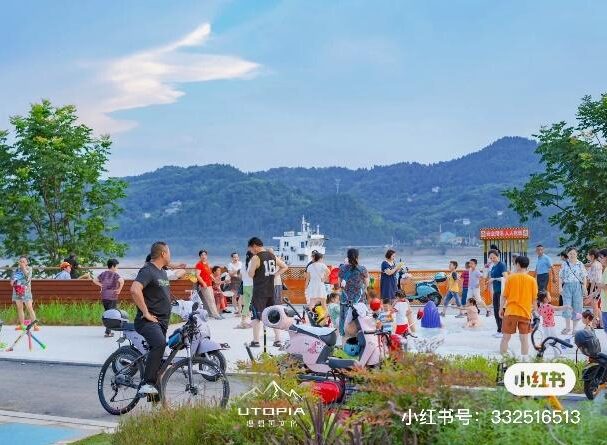
In addition to the cycling infrastructure itself, Yichang also recently announced the development of 110 pocket parks, of which 60 are located within the central city, following the popularity of other such parks piloted along the complete street project on Yunji Lu. These will provide locals with much needed space to mingle, rest, and play. In addition to these comprehensive improvements to non-motorized transport infrastructure, Yichang is also studying a potential second BRT corridor, which will include more bicycle lanes, as well as a Low Emission Zone pilot for the city’s center.
ITDP China is currently supporting the World Bank, the Hubei Provincial government, and the Yichang city government with key projects to shape larger decarbonization plans that will guide the development and funding of future sustainable urban development work across the province. All together, these efforts to re-envision Yichang’s cycling and walking environments are making the city more practical, accessible, and engaging for everyone. To encourage more active modes of mobility, more cities should follow Yichang’s model and make a concerted effort to transform their car-focused streets into people-oriented spaces.
To support global cities in advocating for more cycling, ITDP’s Cycling Cities campaign launched in 2021 to bring millions more people closer to safe, accessible cycling infrastructure. Sign the Pledge here.
View the video below to learn more about the role of cycling in China’s cities:
